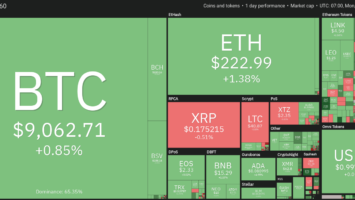The first thing to note is that despite the safe-haven characterization of crypto, the asset class itself in March appeared to be closely correlated with traditional public markets. Additionally, there were some notable crypto funds that went insolvent due to unhedged positions, a leverage mismatch or challenges with conducting proper risk management. Similar to December 2017, some funds were so beneath their high-water mark that the fund managers decided to wind down their fund, issue compulsory redemptions and stop activities.
On average, crypto hedge funds were down among our clients, but not as much as their traditional counterparts. Both categories weren’t down nearly as much as their respective market benchmarks.
Unsurprisingly, we can identify two groups
Funds with market exposure (e.g., long-only funds) mostly mirrored and plunged with the market — although we have seen exceptions — whereas market-neutral crypto hedge funds largely performed with more consistency.
The most stable funds are usually systematic, using a mix of market-neutral strategies, such as statistical arbitrage, and tend to return between 1%–2% per month under any condition. Several of our clients have stuck to these numbers even with the coronavirus crisis, and with the increased opportunity presented by volatility, some of them are even overperforming and delivering alpha.
It’s worth noting that, unfortunately, some of these market-neutral funds have suffered from “poor execution” with their broker/exchanges, which didn’t allow them to perform as they should have. On balance, those funds in that category have greatly minimized losses compared to market-exposed funds.
On that topic, it’s worth noting that overall, the industry as a whole has been very resilient to the crisis: We haven’t seen any socialized losses on any major exchanges, and very few have been deleveraged. Thanks to the digital nature of the crypto space, the industry is coping very well with a “working-from-home” world, with minimal disruption.
Similarly to traditional public markets, the industry expects market-neutral hedge funds to regain momentum as investors seek to lower their exposure to market uncertainty.
This factor, in addition to the current volatility in the markets, may explain why Vauban has never received so many new hedge fund launch inquiries, with a good percentage of these being crypto fund managers. We expect that hedge funds will thrive in the coming years and that there will be investor appetite for such funds.
Crypto hedge funds remain a fantastic opportunity for investors. While there are risks inherent to the industry in its current state that should be taken into account, market-neutral funds that stick to their mandate offer a good opportunity to buy into a consistent return over the long term, which would be very hard to achieve in traditional markets. On the other hand, it is expected that some directional funds will make significant returns for their investors over the short term.
The views, thoughts and opinions expressed here are the author’s alone and do not necessarily reflect or represent the views and opinions of Cointelegraph.
Rémy Astié is the CEO of Vauban, a financial technology company that specializes in frictionless setup and administration of investment funds. He enjoys writing about digital asset fund structures, among other things.




Comments (No)